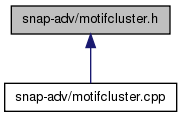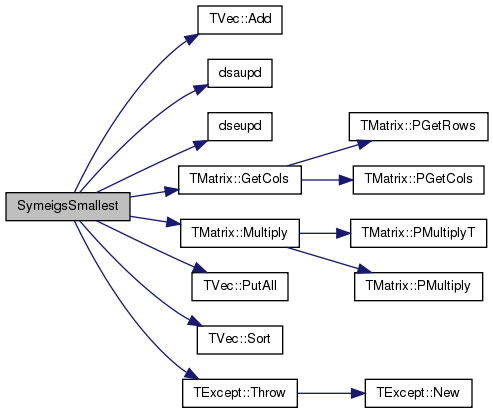|
SNAP Library 6.0, Developer Reference
2020-12-09 16:24:20
SNAP, a general purpose, high performance system for analysis and manipulation of large networks
|
|
SNAP Library 6.0, Developer Reference
2020-12-09 16:24:20
SNAP, a general purpose, high performance system for analysis and manipulation of large networks
|
#include "Snap.h"

Go to the source code of this file.
Classes | |
| class | TSweepCut |
| class | MotifCluster |
| class | ChibaNishizekiWeighter |
Typedefs | |
| typedef TVec< THash< TInt, TInt > > | WeightVH |
Enumerations | |
| enum | MotifType { UniDE, BiDE, DE, DE_any, M1, M2, M3, M4, M5, M6, M7, triad, cycle, FFLoop, UEdge, clique3, clique4, clique5, clique6, clique7, clique8, clique9, M1, M2, M3, M4, M5, M6, M7, M8, M9, M10, M11, M12, M13, bifan, semiclique, triangle, clique3, clique4, clique5, clique6, clique7, clique8, clique9, edge } |
Functions | |
| void | SymeigsSmallest (const TSparseColMatrix &A, int nev, TFltV &evals, TFullColMatrix &evecs, double tol=kDefaultTol, int maxiter=kMaxIter) |
Variables | |
| const double | kDefaultTol = 1e-12 |
| const int | kMaxIter = 300 |
| enum MotifType |
Definition at line 10 of file motifcluster.h.
| void SymeigsSmallest | ( | const TSparseColMatrix & | A, |
| int | nev, | ||
| TFltV & | evals, | ||
| TFullColMatrix & | evecs, | ||
| double | tol = kDefaultTol, |
||
| int | maxiter = kMaxIter |
||
| ) |
Definition at line 955 of file motifcluster.cpp.
References TVec< TVal, TSizeTy >::Add(), TFullColMatrix::ColN, TFullColMatrix::ColV, dsaupd(), dseupd(), F77_NAME, TMatrix::GetCols(), MAX, MIN, TMatrix::Multiply(), TVec< TVal, TSizeTy >::PutAll(), TFullColMatrix::RowN, TVec< TVal, TSizeTy >::Sort(), and TExcept::Throw().
Referenced by MotifCluster::NFiedlerVector().


| const double kDefaultTol = 1e-12 |
Definition at line 5 of file motifcluster.h.
| const int kMaxIter = 300 |
Definition at line 6 of file motifcluster.h.